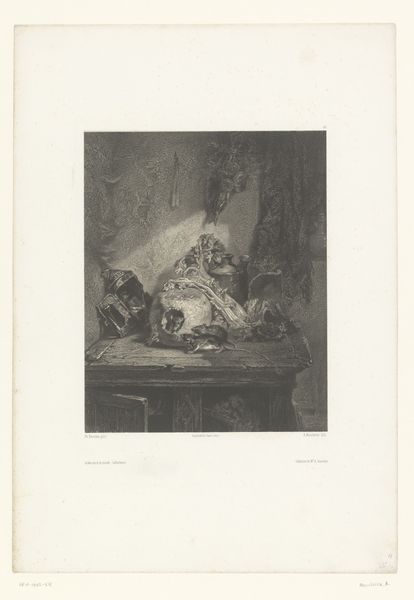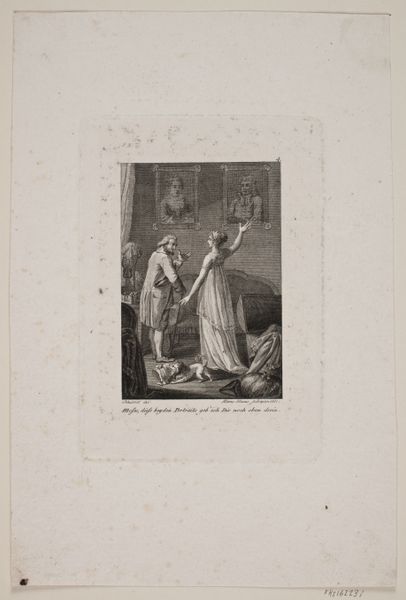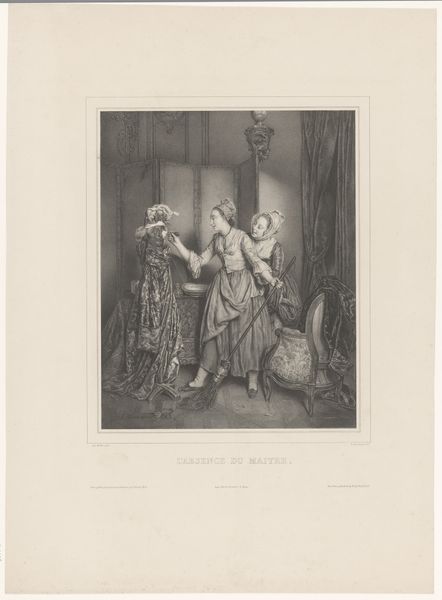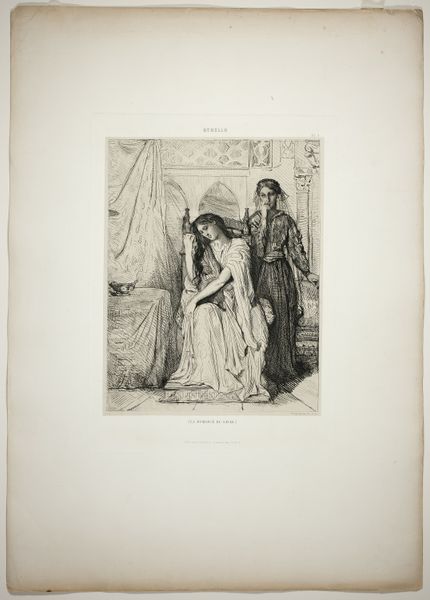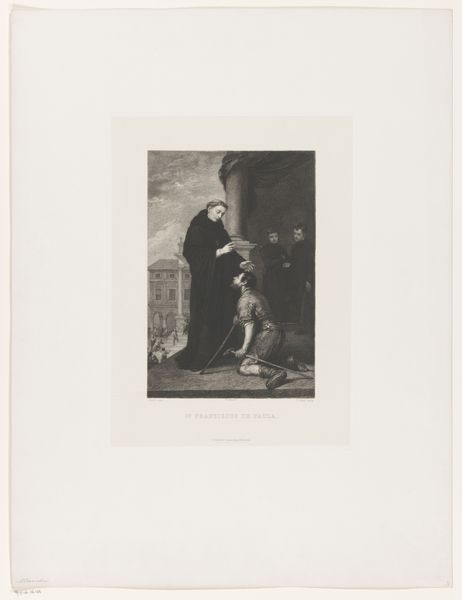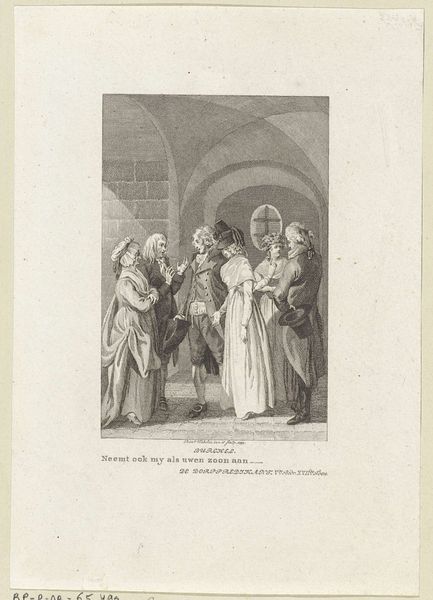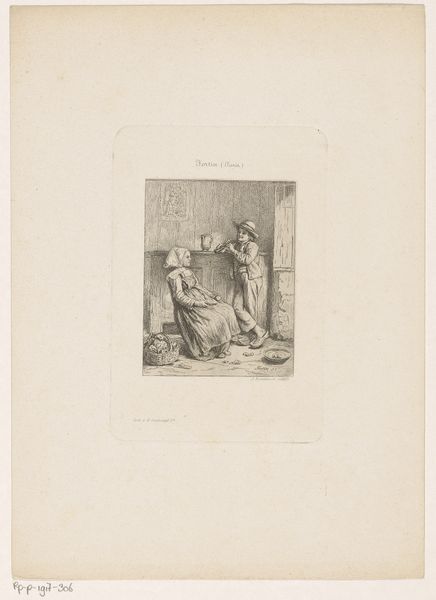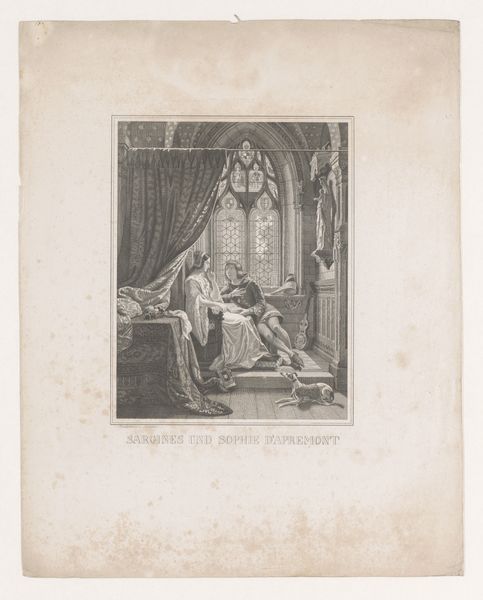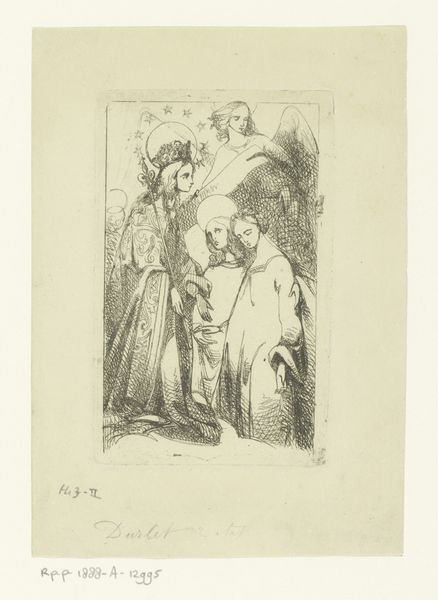
drawing, lithograph, print, paper
#
pencil drawn
#
drawing
#
narrative-art
#
lithograph
# print
#
figuration
#
paper
#
pencil drawing
#
romanticism
#
history-painting
Dimensions: 258 × 207 mm (image); 547 × 358 mm (sheet)
Copyright: Public Domain
Editor: This is "Ophelia's Song, plate 12 from Hamlet" by Eugène Delacroix, created in 1834. It's a lithograph, so a print made from a stone, depicting a scene from Shakespeare. I find the central figure, Ophelia, to be incredibly dramatic, almost theatrical in her despair. How do you interpret this work? Curator: The print offers a powerful intersectional lens for examining themes of madness, gender, and power as they are staged in Hamlet and interpreted in Delacroix's era. Ophelia's descent into madness, a direct consequence of patriarchal constraints and her love for Hamlet, highlights the limited agency afforded to women. What strikes me is the composition itself – the positioning of Ophelia versus the observers in the background. What does that placement suggest to you? Editor: It seems to emphasize her isolation, maybe even her objectification. They’re standing back, almost judging her, while she is in this very vulnerable state. Curator: Precisely. Delacroix, working within the Romantic period, was keen to express extreme emotion. Yet we must consider how the theatricality of the piece can inadvertently reinforce stereotypes. Does Ophelia truly possess autonomy here, even in her madness, or is she a spectacle crafted for the male gaze, both within the play and in its artistic representations? Consider, too, how the aesthetics of Romanticism intersect with societal expectations about female hysteria during this period. Editor: That's a compelling point. I hadn't considered how the artistic style itself might contribute to a problematic representation. Curator: It is also useful to remember the cultural context of Shakespeare during Delacroix's time. His work was employed as a way to examine modern ideas in society. Considering the historical context enriches our viewing of it. Editor: I've definitely gained a new appreciation for considering art beyond its immediate aesthetic impact and to understand gender, class and identity from multiple perspectives. Thank you! Curator: Indeed, by examining these intersections, we can glean deeper insights into both the art and the culture that birthed it.
Comments
No comments
Be the first to comment and join the conversation on the ultimate creative platform.

